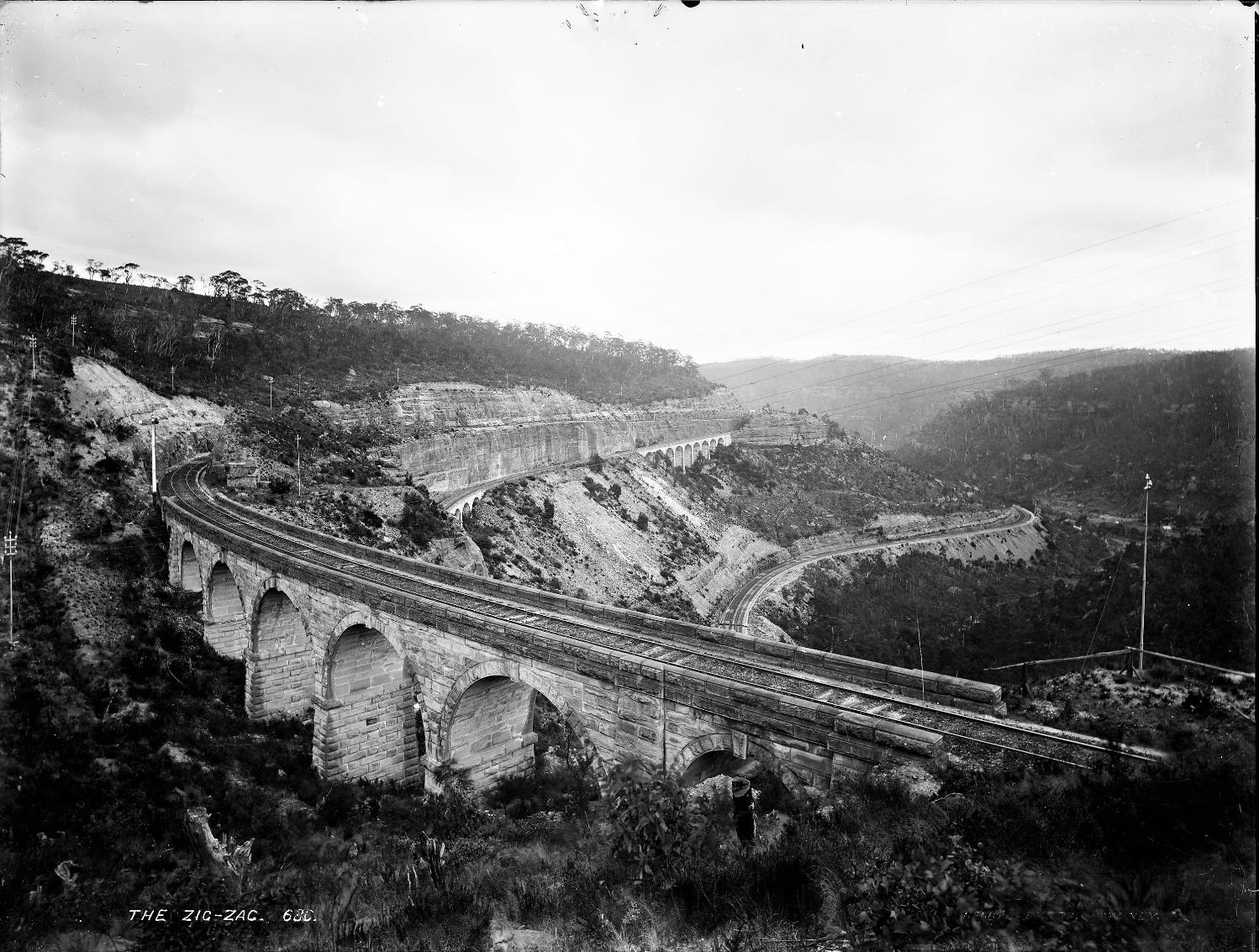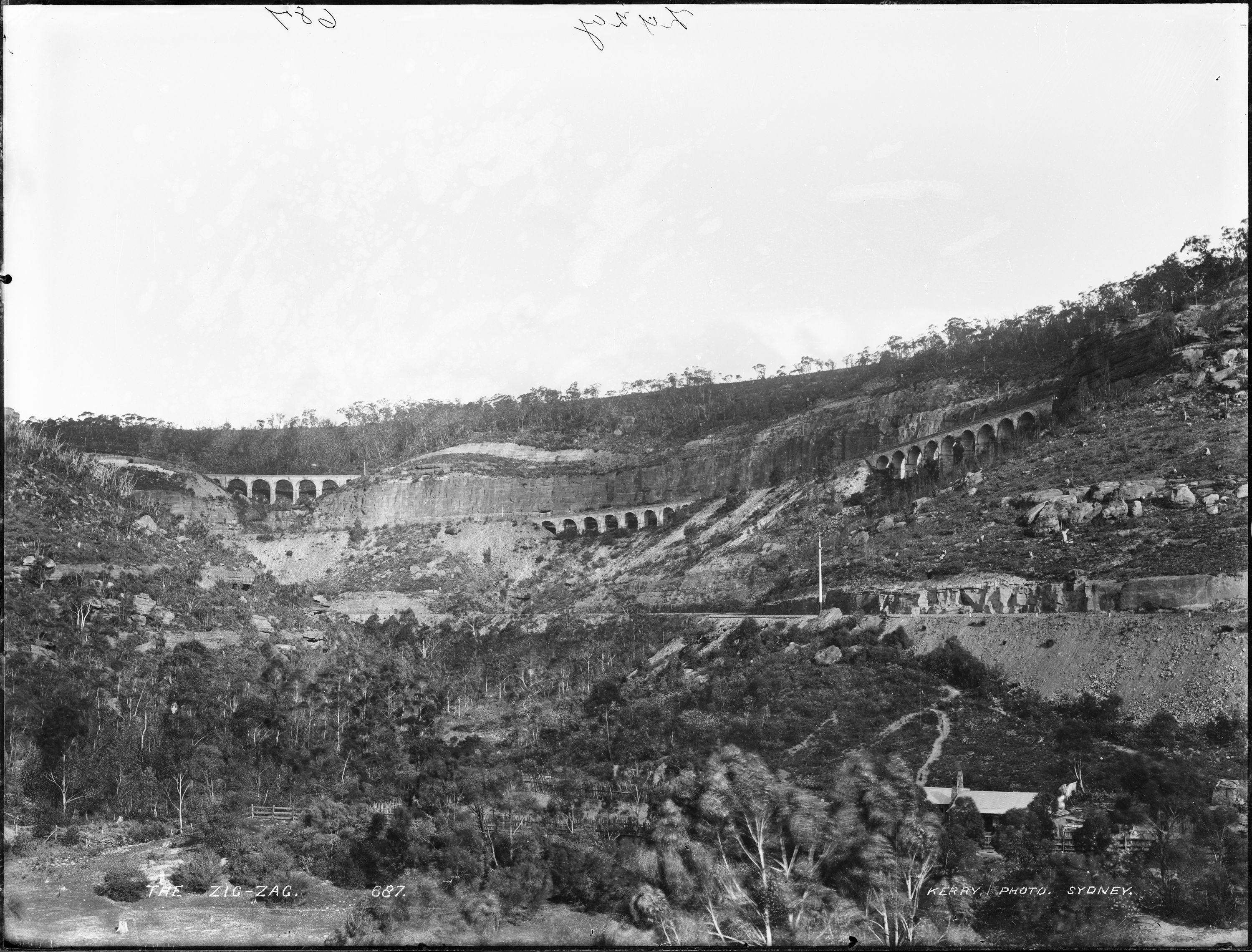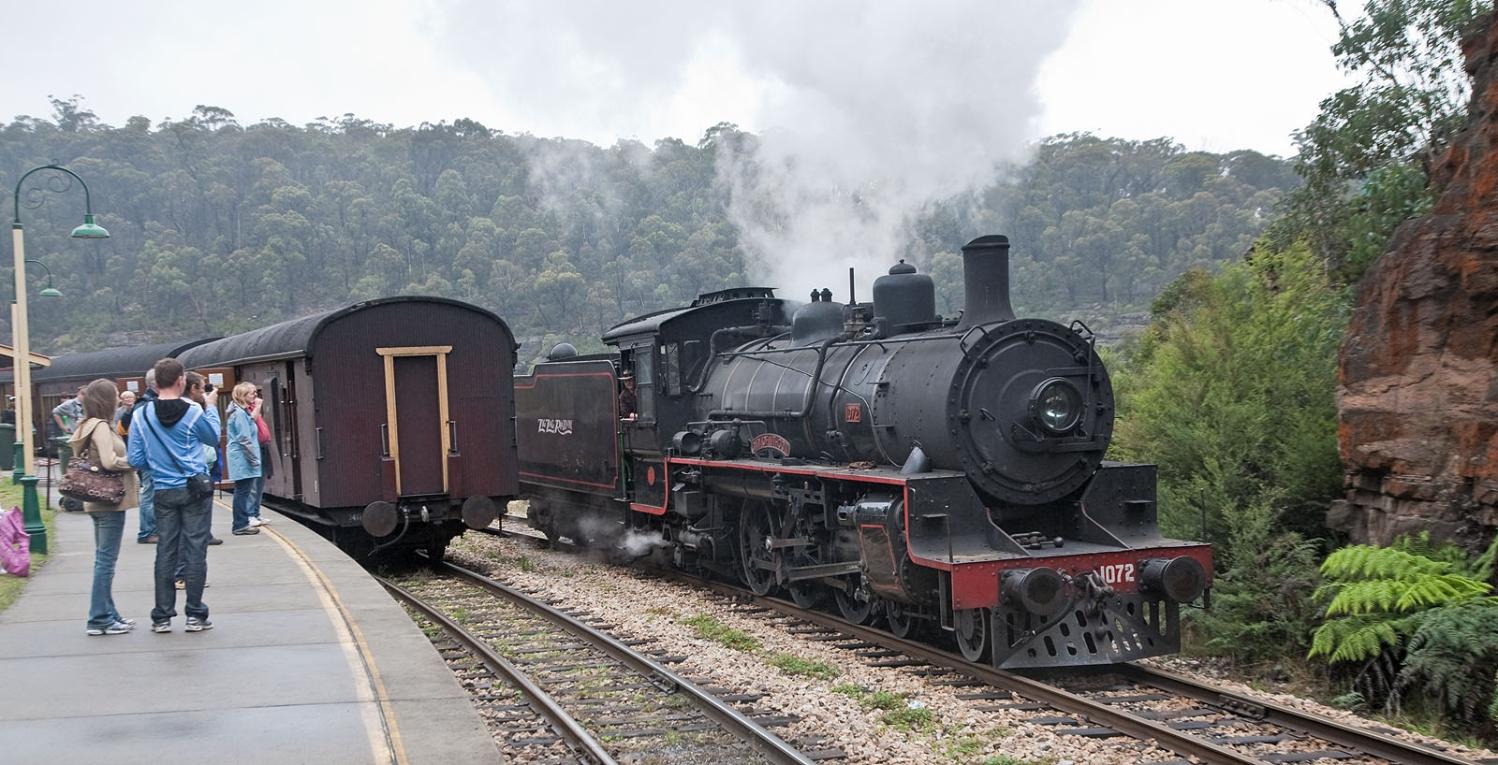May 28 - June 3 2023: Issue 585
Historic Zig Zag Railway Reopens: One Place To Take The Youngsters, And Oldsters, This Winter School Holidays

The historic Zig Zag Railway returned to life this weekend as passenger services resume following a joint volunteer and NSW Government effort to restore the Blue Mountains icon from fire and flood damage.
For years, volunteers have toiled to restore the railway and the NSW Government provided more than $5.9 million through Crown Lands and the Department of Regional NSW to rebuild the locomotive workshop, construct a car park, pedestrian crossing and amenities block.
Zig Zag Railway also rebuilt its safety management system, network rules, procedures and rail policies after a decade out of operation to be granted accreditation to resume passenger services by the Office of the National Rail Safety Regulator.
Minister for Lands and Property Steve Kamper said the reopening this weekend was another historic milestone in the railway’s ongoing journey.
“Zig Zag Railway is a tourist and heritage icon for our state attracting up to 80,000 visitors a year so the NSW Government investment to support the volunteers to get it back on the tracks will be great for tourism, business and jobs in the Lithgow and Blue Mountains regions,” Mr Kamper said.
Zig Zag Railway Acting Chief Executive Officer Daniel Zolfel said the community-wide effort to restore the railway had been heart-warming.
“It’s been 10 plus years of blood, sweat and tears so this weekend’s reopening brings overwhelming relief and will be very emotional for all those involved,” Mr Zolfel said.
“We couldn’t have done it without the dedicated volunteers and also financial support of the NSW Government to restore the workshop which is the heart and soul, car park, repair viaducts and tunnels, tracks, locomotives, carriages and platform precincts at Clarence, Top Point and Bottom Point stations.”
The 154-year-old railway dates back to 1869 when it was first opened as part of the Main Western rail line serving mountain runs until 1910 when a track deviation was installed.
The not-for-profit Zig Zag Railway Co-op resurrected the heritage-listed railway in 1975 but was stalled from 2012 by accreditation issues followed by bushfire and storm damage, and then further wiped out by the 2019-2020 bushfires.
Visitors will again experience the sights, sounds and smells of the steam train era from this weekend with the Zig Zag Railway to run three 90-minute trips at 10.30 am, 12.30 pm and 2.30pm each fortnight on Saturdays and Sundays on its 7.5 kilometre track.
For more information, and to book your tickets, visit: https://zigzagrailway.au
One experience to consider for those who love the old choo-choos and the scenic route this coming Winter School Holidays.
Some History
The Lithgow Zig Zag is a heritage-listed former zig zag railway line built near Lithgow on the Great Western Line of New South Wales in Australia.
The zig zag line operated between 1869 and 1910, to overcome an otherwise insurmountable climb and descent on the western side of the Blue Mountains. It was designed by John Whitton and built from 1863 to 1869 by Patrick Higgins as contractor. It is also known as the Great Zig Zag Railway and Reserves and Zig Zag Railway. The property is owned by Department of Planning and Infrastructure (NSW State Government). It was added to the New South Wales State Heritage Register on 2 April 1999.
.jpg?timestamp=1685223176090)
A View of the Zig Zag railway. Photo: Maksym Kozlenko
The original plan by the Engineer-in-Charge of New South Wales Government Railways, John Whitton, had been to build a 2-mile (3.2 km) tunnel. However, this was beyond the resources of the Colonial Government at the time. The zig zag alternative still required several short tunnels and some viaducts.[1] After consideration of several alternate routes the Great Western Railway was extended along the high ridge of the Darling Causeway from Mount Victoria. The descent to the Lithgow Valley was originally proposed by means of a tunnel. In 1866 the tunnel was estimated to be about two miles in length and a figure of £800,000 was set down as the cost of its construction. However, due to the enormous cost, construction time and, as John Whitton, Engineer-in-Chief of the NSW Railways reported at the time, it would have been difficult to get a contractor to undertake such difficult work. As a result, John Whitton selected the zig zag method of ascent and descent.
On the eastern side of the range, the Lapstone Zig Zag, also designed under the supervision of John Whitton, opened near Glenbrook in 1867. The Lapstone Zig Zag ascended Lapstone Hill on a gradient of 1:30 to 1:33 (~ 3 - 3.3%), which contoured up the side of the range with comparatively light earthworks.
By contrast, the Lithgow Zig Zag railway, built between 1866 and 1869, required much heavier engineering, including four large rock cuttings, three fine stone viaducts with 30-foot (9.1 m) semi-circular arches (originally four were planned, but one was built as an embankment instead) and a short tunnel (three tunnels were planned, but two were daylighted during construction due to leaks, becoming two of the four cuttings mentioned above). In the descent of the middle road, the line dropped 101 feet (31 m) between the reversing points, being part of the 550 feet (170 m) descent from Clarence. The whole route had a ruling grade of 1:42 (~2.38%).
John Whitton and his work have been underrated in Australian history, although they provided the operational foundation of the main railway lines in New South Wales. In international references Whitton is recognised as one of approximately twenty of the greatest railway civil engineers in the first century of world railway construction. The achievement of his crossings of the Great Divide was superlative at the time and in terms of British railway civil engineering was only exceeded by the difficult crossing of the Indian Ghats.
The contract to build the Great Zig Zag was awarded to Mr Patrick Higgins in May 1866. It was for the Clarence to Wallerawang section of railway which consisted of seven stone viaducts, varying in height from 3.0 to 21.3 metres (10 to 70 ft), three tunnels and nearly one and a quarter million cubic yards of excavations, two-thirds through rock.

Zig Zag Railway. Photo: Kerry, Tyrell Collection, Powerhouse Museum
George Donald
George McGarvie Donald of Lithgow was a master stonemason and builder who helped create the city of Lithgow. Born in Paddington in 1846, he was son of a Scottish stonemason, George Donald, senior. George senior had been encouraged to migrate to New South Wales by Governor Macquarie who wished him to assist with government building works. George junior did an apprenticeship as a stonemason under his father and uncle. After this he was engaged on railway construction projects in the Bowenfels district in the late 1860s. He worked on stone railway bridges at the Great Zig Zag and Marrangaroo, and married Marion Miles, daughter of one of the construction foremen.
Following completion of the railway he moved to Hill End and worked on a range of construction projects. Among these was Hill End Methodist church, built of basalt rubble from the gold mines. It is now used as an Anglican church. After the failure of the deep lead gold boom of the 1870s George returned to the Lithgow valley and established a construction business with Thomas Crowe. In the early 1880s he constructed St. Mary's Presbyterian church for Thomas Brown, built as a memorial to Brown's wife, Mary. He also built Cooerwull Academy for Brown, and the Church of St. John the Evangelist at Wallerawang. Other projects included Lithgow Town Hall, Wallerawang Public School the Lithgow Oddfellows Hall and many residences. Donald and Crowe also built Mort's freezing works. George Donald was extremely active in community affairs and had a great sense of social justice. He was founding member of the GUIOOF Lily of the Valley Lodge and the Good Templars Lodge. Popular among citizens he was elected the first mayor of Lithgow after establishment of the Municipality of Lithgow in 1889. He held the seat of Hartley in the NSW Legislative Assembly jointly with Joseph Cook from 1891.
Commercial operation and closure
On 19 October 1869 the first official train ran across the Lithgow Zig Zag to Bowenfels railway station, completing the route over the Blue Mountains. This event was heralded worldwide as an engineering marvel resulting in many organised sight-seeing parties from overseas to view it.
According to NSW Planning Department documents, in international references, John Whitton is recognised as one of approximately twenty of the greatest railway civil engineers in the first century of world railway construction. The achievement of his crossings of the Great Divide was superlative at the time and in terms of British railway civil engineering was only exceeded by the difficult crossing of the Indian Ghats.
Between 1869 and 1910 the railway was a major force in the development of western New South Wales. Eventually traffic became so dense, due to the growth of the railway system through the spread of settlement, together with the loss of time in working over the Great Zig Zag, that alternatives were considered. From the 1880s many inquiries and investigations were held including consideration of John Whitton's original proposal for a two-mile tunnel.
The Lithgow Zig Zag operated between 1869 and 1910. By then it had become an increasingly inefficient bottleneck owing to the growing traffic on the line between Lithgow and Sydney. The Top Points were also too short.
Two major accidents occurred in 1901, in January a carriage was backed through the top wing buffer stops and in April a goods engine burst through the buffer stops located at the top "wing" and almost fell into the valley below.
To alleviate the congestion, until a new deviation opened, the "top" and "bottom" wings were improved. The "top" wing was abandoned and a new line constructed which involved a sharp curve, heavy rock excavations and earth fillings to a depth of 60 feet (18 m). The "bottom" wing was lengthened without any re-location. However, accidents still continued to occur, as was seen on 8 December 1908 when a Sydney bound goods train stalled just beyond Clarence Tunnel. The train was divided into two but the bottom portion accidentally became a runaway and eventually crashed into the rock cutting of Top Points.
There were plans to replace the section of 1 in 42 from Lithgow to Bottom points with a second horseshoe curve-like longer deviation, or with a spiral, but as this section in the open air could be operated with bank engines, this second stage deviation was never carried out.
In 1908, work began on the Ten Tunnels Deviation, a double tracked route with a ruling grade of 1:42 as far as the start of the ten tunnels and 1 in 90 through the ten tunnels. The Lithgow Zig Zag was eventually abandoned in 1910, replaced by the Ten-Tunnels Deviation which is still in heavy use as the Main West line to the central-west of NSW and ultimately the trans-Australia line between Sydney and Perth. On 16 October 1910 the new deviation was opened for traffic and the Great Zig Zag closed.
1. From: ''Great Zig Zag Railway and Reserves". New South Wales State Heritage Register. Department of Planning & Environment. H00542. Retrieved 2 June 2018. CC BY icon.svg Text is licensed by State of New South Wales (Department of Planning and Environment) under CC-BY 4.0
